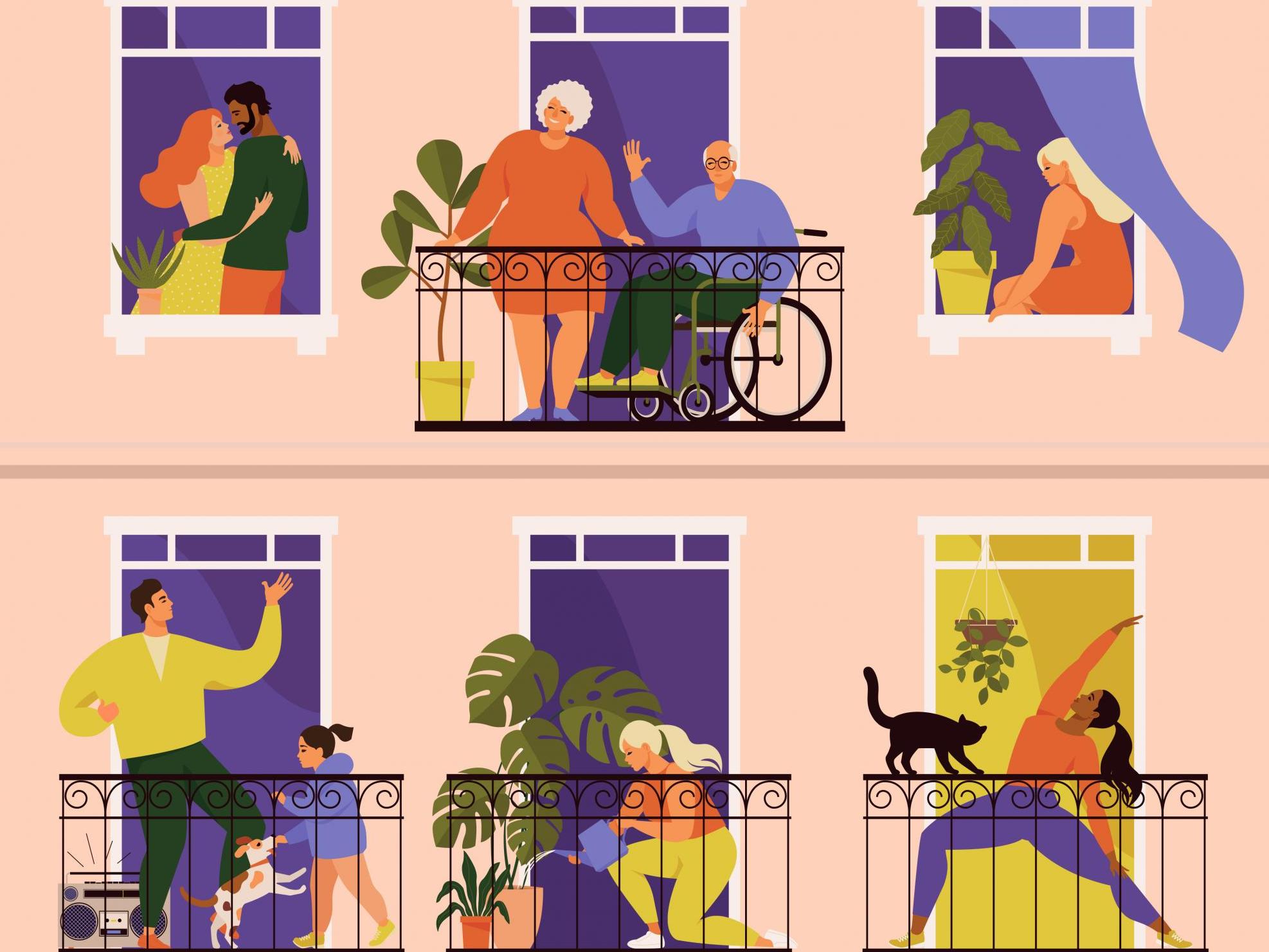Will ‘social bubbles’ let me see friends and family? How they could be used to merge households in June
New Zealand, Belgium, Guernsey and Northern Ireland are already experimenting with mixing social groups

Your support helps us to tell the story
From reproductive rights to climate change to Big Tech, The Independent is on the ground when the story is developing. Whether it's investigating the financials of Elon Musk's pro-Trump PAC or producing our latest documentary, 'The A Word', which shines a light on the American women fighting for reproductive rights, we know how important it is to parse out the facts from the messaging.
At such a critical moment in US history, we need reporters on the ground. Your donation allows us to keep sending journalists to speak to both sides of the story.
The Independent is trusted by Americans across the entire political spectrum. And unlike many other quality news outlets, we choose not to lock Americans out of our reporting and analysis with paywalls. We believe quality journalism should be available to everyone, paid for by those who can afford it.
Your support makes all the difference.Since the beginning of lockdown on 23 March, people across the UK have been prevented from meeting with anyone outside of their own household, including friends and family.
From 14 May the rules were eased slightly by prime minister Boris Johnson, meaning that you could meet one other person from outside your household if you live in England - but only outdoors and maintaining a distance of two metres at all times.
Then, two weeks later, the rules were eased again to allow meeting six people outside your house, either in a private garden or park. But you must remain outside and socially distanced.
Now the government is starting to look at longer-term measures to allow people greater social contact, for example meeting in bigger groups or for prolonged periods, as it acknowledges the impact these restrictions have had on the isolated and vulnerable.
What are social bubbles?
The idea of a social bubble was first laid out in the government’s 50-page roadmap out of lockdown, published on 11 May. It said the intention of such bubbles is to allow some social contact, while continuing to limit the risk of further Covid-19 transmissions.
The government said this model could be “based on the New Zealand model of household ‘bubbles’". New Zealand has been trialling the social bubble scheme for several weeks, allowing groups of up to 10 people to mix outdoors.
Jacinda Arden’s government gives the following examples of how the bubble works, depending on the virus alert level at any given time. For example at ‘level 3’: “You can now slightly extend your household bubble to include people such as close family members, caregivers or someone who needs care. Keep your extended bubble local, small and exclusive.”
But in stricter scenarios, if the number of deaths did not continue dropping or the R-number (the average number of people infected for every Covid-case) increases, people are then not allowed to use the bubble scheme.
Are other countries trialling bubbles?
Nicola Sturgeon has said the Scottish government is exploring options such as “bubble” arrangements or expanding the definition of "households" to allow small gatherings of people as a way of "encouraging people who live alone to maybe match up with somebody else who is on their own, or a couple of other people to have almost kind of bubbles of people".
The first minister said the bubble would operate as a “single, self-contained unit” without connections to other households or bubbles.
In Belgium, every household can now invite up to four guests into their home. Two sets of four people will make a “corona bubble”, who can then visit each other’s homes more freely. But no one else is allowed into the domestic social circle. Visitors are still told not to hug or exchange other physical greetings, like kissing.
On the Channel Island of Guernsey, households can also socialise with members of another. But the bubble applies to entire households so individuals within it cannot form separate tangent groups. Social distancing does not apply to those merged groups.
Northern Ireland already allows groups of up to six people from different households to meet outdoors as long as they maintain social distancing.
What might bubbles look like?
Currently the people you live with form your social bubble and the next step taken by the government means this has been slightly expanded to include other groups of up to six people. Not only does this reduce risk of mass spread but will mean tracing is easier if anyone does become ill.
Clearly different countries are trialling different ways of forming this group, but the government document released on 11 May said ministers had asked SAGE (the scientific advisory group) to examine “whether, when and how it can safely change the regulations to allow people to expand their household group to include one other household in the same exclusive group”.
This is similar to the model in Guernsey and would most likely mean a household can pick a small number of friends or family to mix with, and not mix with anyone else.
Those who are at higher risk of contracting Covid-19, or on the government’s vulnerable shielding list, are unlikely to be permitted to socialise in social bubbles.
If anyone in the group experiences coronavirus symptoms, they will be ordered to self-isolate and not continue contact with that group.
Join our commenting forum
Join thought-provoking conversations, follow other Independent readers and see their replies
Comments